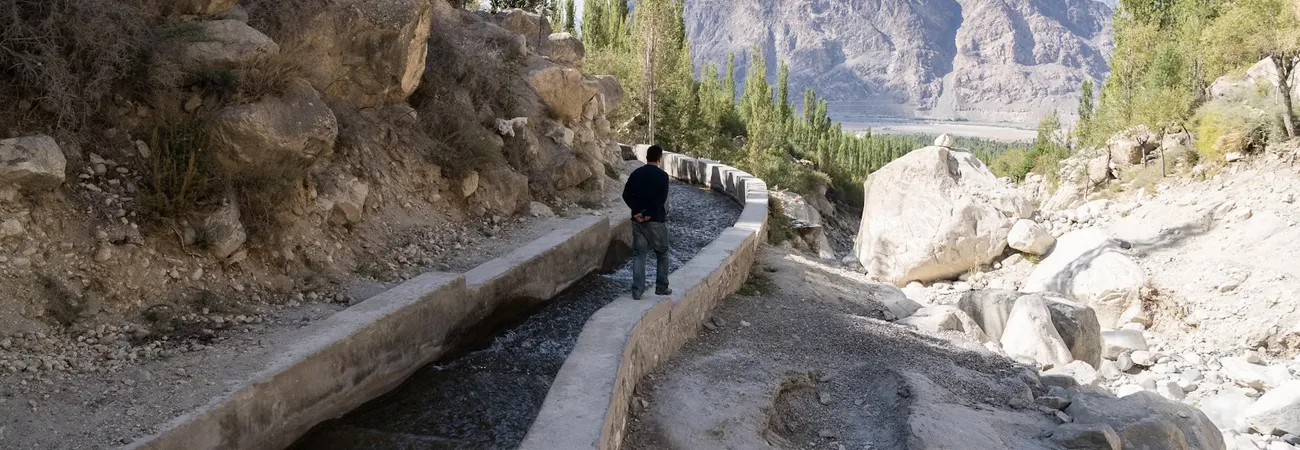i ECONOMY
Climate change is impacting Pakistan’s northern areas, where the glaciers are fast melting, causing water scarcity. To overcome the challenge, avalanche harvesting was introduced in Gilgit-Baltistan (GB) last year among other indigenous techniques. Director of Planning and Development and project leader of avalanche trapping/harvesting at the University of Baltistan, Skardu (UOBS) Dr. Zakir Hussain Zakir said this in an interview with WealthPK. Avalanches is a regular phenomenon in the snow-covered areas located at a height of more than 4,000 meters. They frequently occur in the high mountains of the Himalayas, the Karakoram, and the Hindukush range of Gilgit-Baltistan. This accumulated snow on high ridges and mountains rolls downhill, carrying huge amounts of debris that is highly destructive for roads, localities and other structures. “The impact of avalanches is the same as that of the glacial lake outburst flood (GLOF). Sometimes, communities have to move from their settlement due to this phenomenon.
The melted water from this ice giant eventually dissipates by seeping into the earth, evaporating, or flowing down into the river. “By trapping and harvesting avalanches, not only the catastrophic situations can be avoided but they can also be used as a sustainable source of water supply. This method can be replicated in the other areas where avalanches are a regular phenomenon,” he said. “For avalanche trapping, structures can be built in any season but we prefer it in the spring or summer season. We erect traps, which become functional in winter. Technically, an avalanche is a huge snow bulk gathered due to snow melting, animal trotting, falling of stones, and rolling effects. It is also called snowballing. When it takes effect, all the snow rolls down with it. “Avalanche trapping can be done by simply installing wide mesh-like structures made by the gabion high tensile cables. To erect a net, there must be solid rocks on both sides of the trapping gorge or area so as to hammer in the net holding pegs. At least 3 to 4 layers of cable net are set to seize the falling avalanche debris,” he explained.
The topmost cable of the net is widely spaced around eight by ten feet with meshes thinner than the lower ones. Both the layers are kept 40 to 70 feet apart. This distance allows a sufficient gap to accumulate the ice. The number of net layers, mesh size, and height are adjusted based on the site requirements and the expected bulk of ice mass. The nets used in this operation are risk-free, as their parts will not add to the debris even if the structure is damaged. Dr. Zakir said that he was the first ever person to have introduced this technique not only in Pakistan but also in South Asia. The UOBS initiated it in 2023 at an altitude of about 3,000 meters from where the avalanche takes its course, typically a narrow gorge with the surrounding hard rocks. “Luckily, I am proud to say that the trap was first installed by the University of Baltistan, Skardu. In July or August 2024, we will examine the trapped ice mass, ready to be harvested,” he added. Avalanche harvesting is useful in multiple ways. It can be left to grow as a greater ice mass, further converting to a glacial place. Its melting waters can prove a good water source for spring irrigation and to enhance local vegetation.
Credit: Independent News Pakistan (INP)









